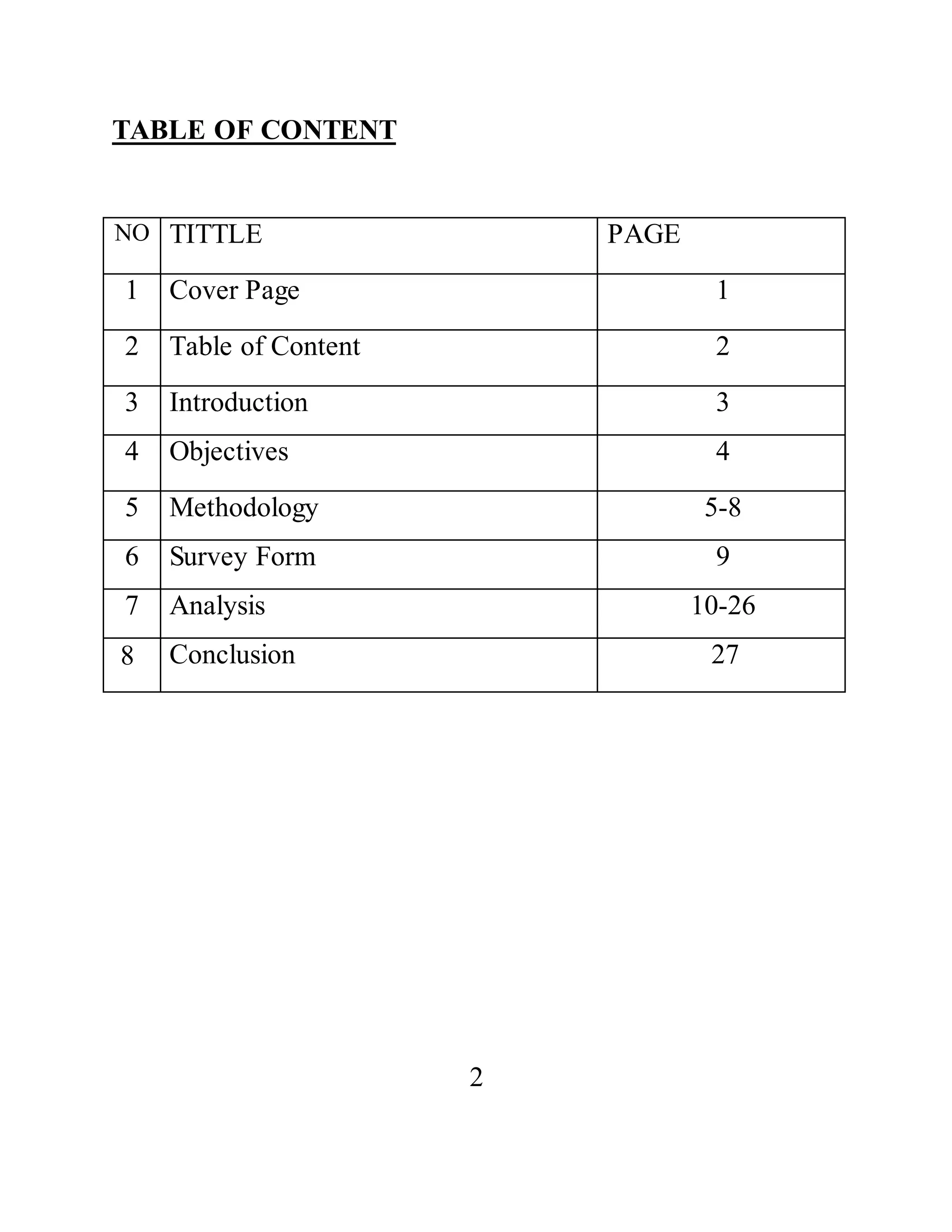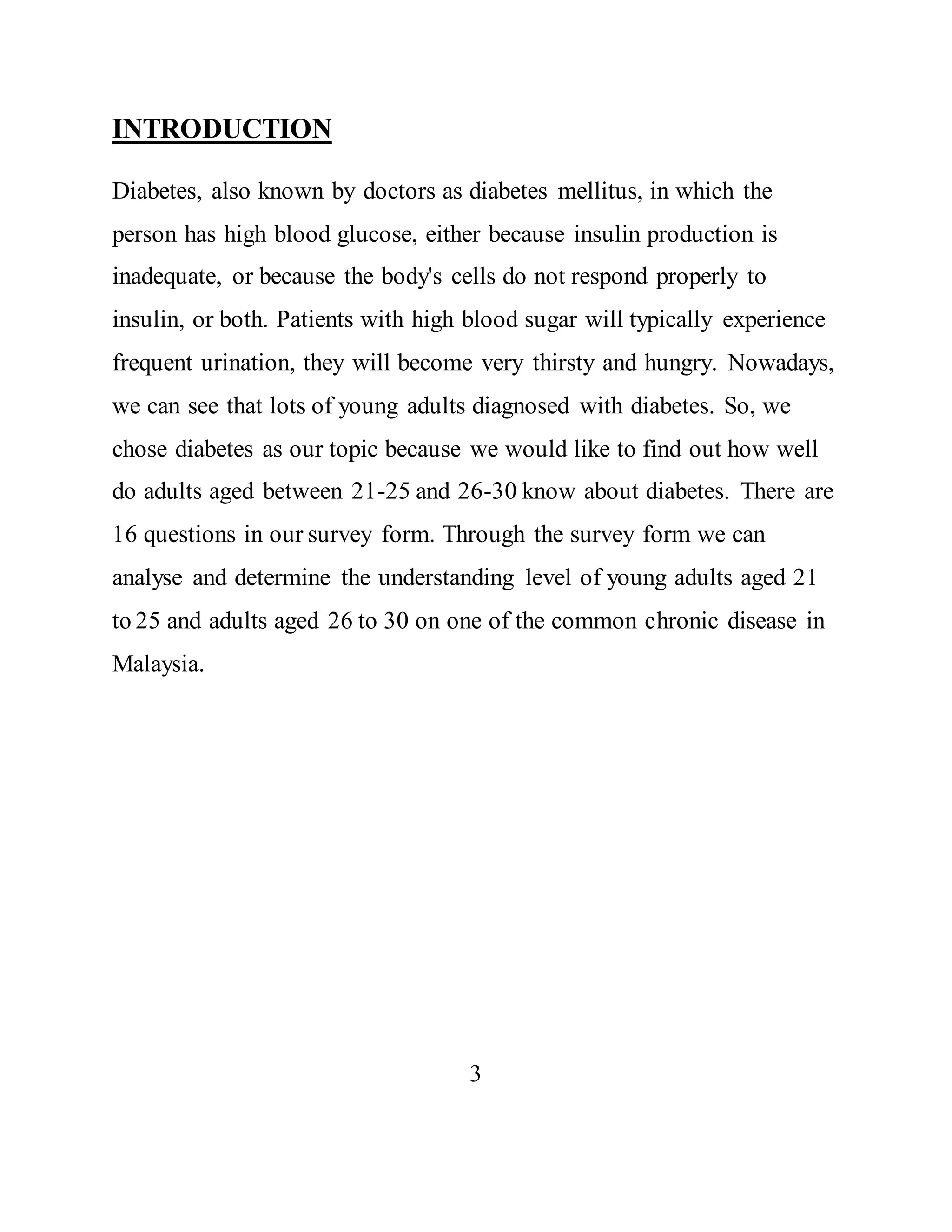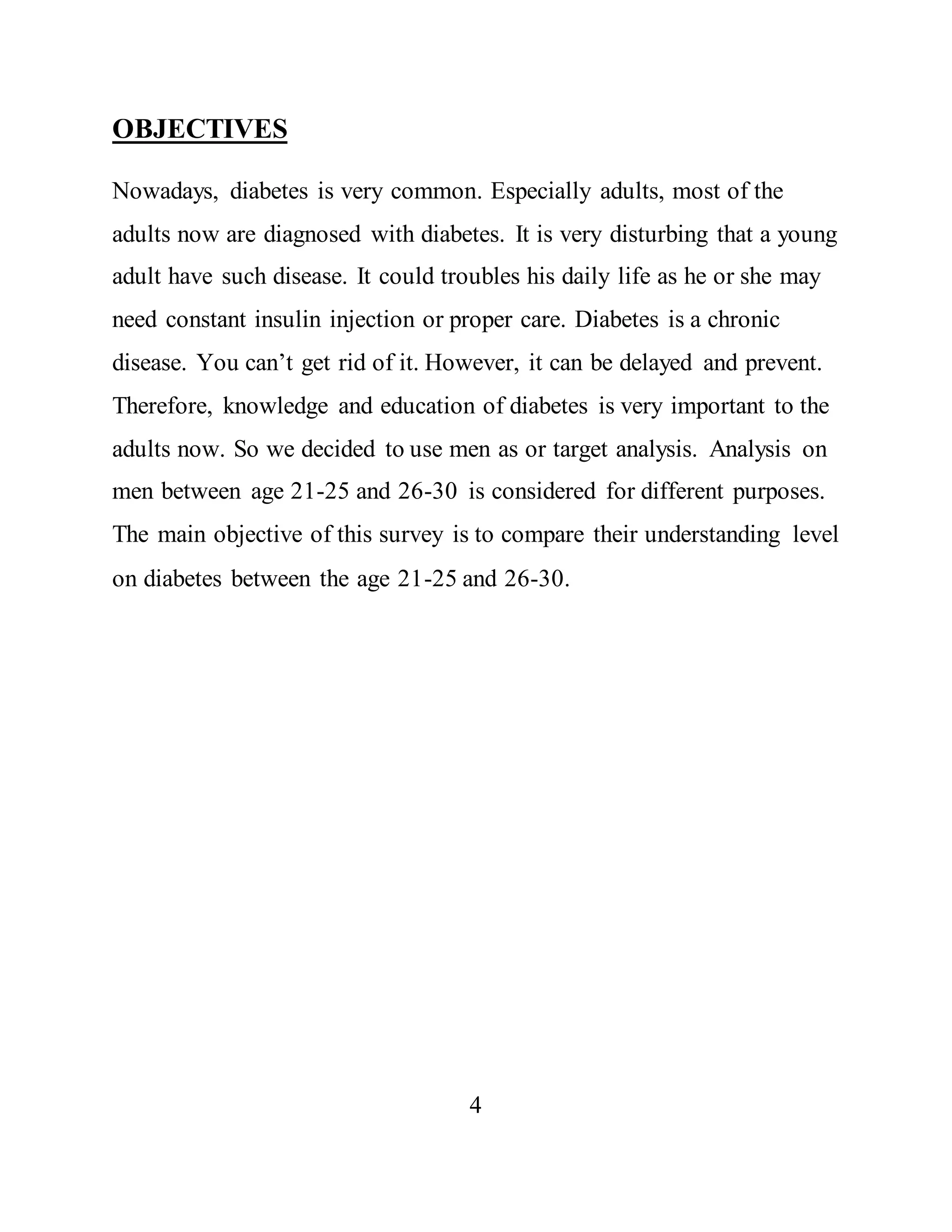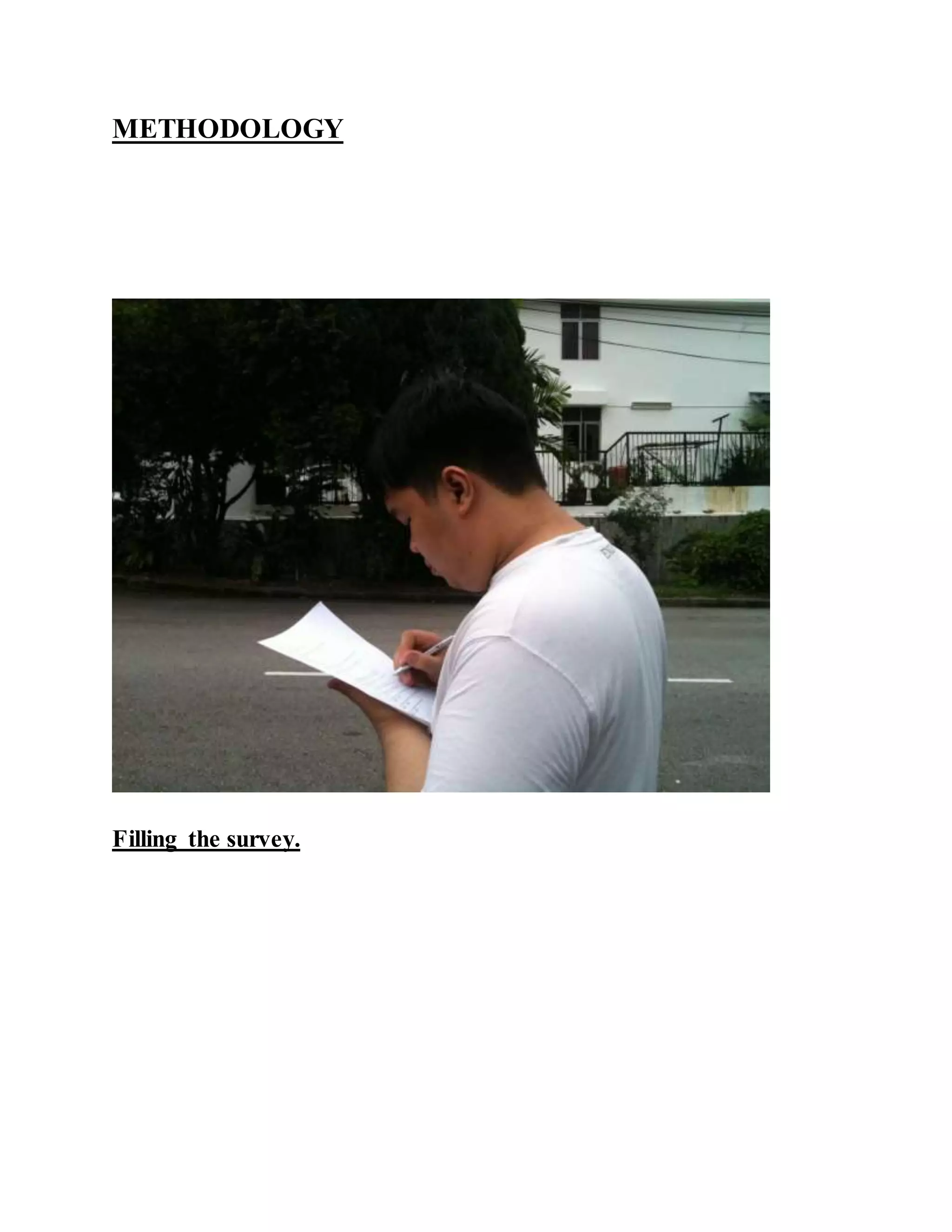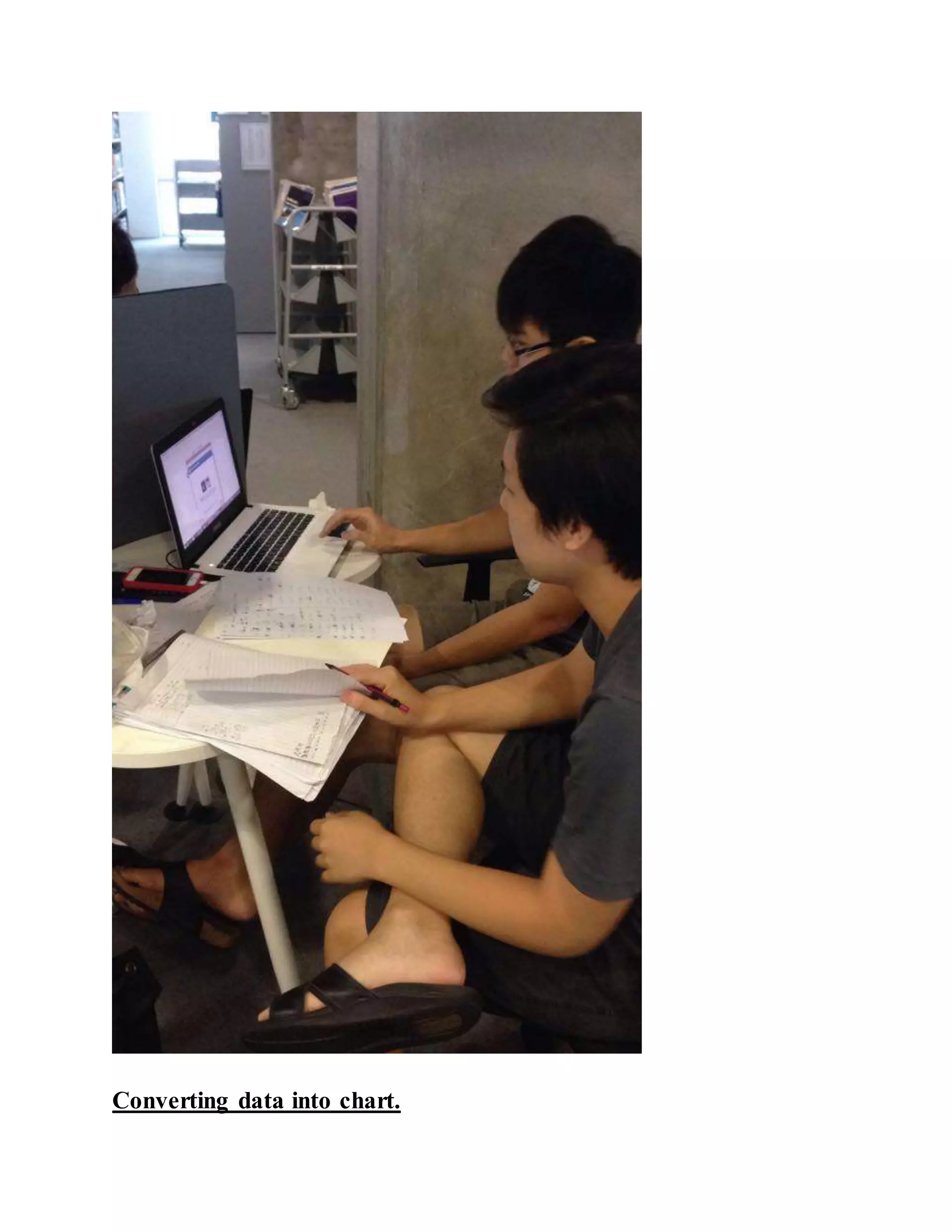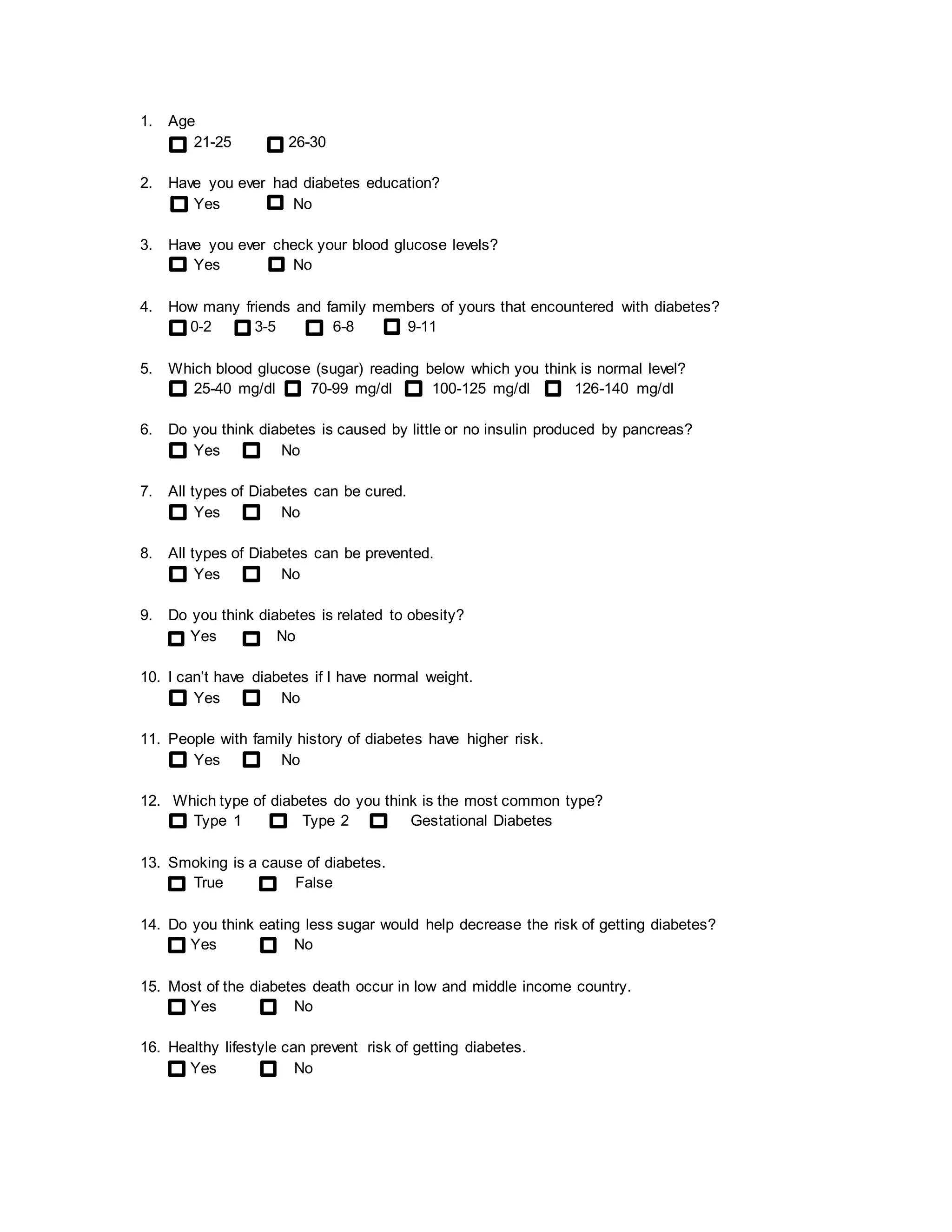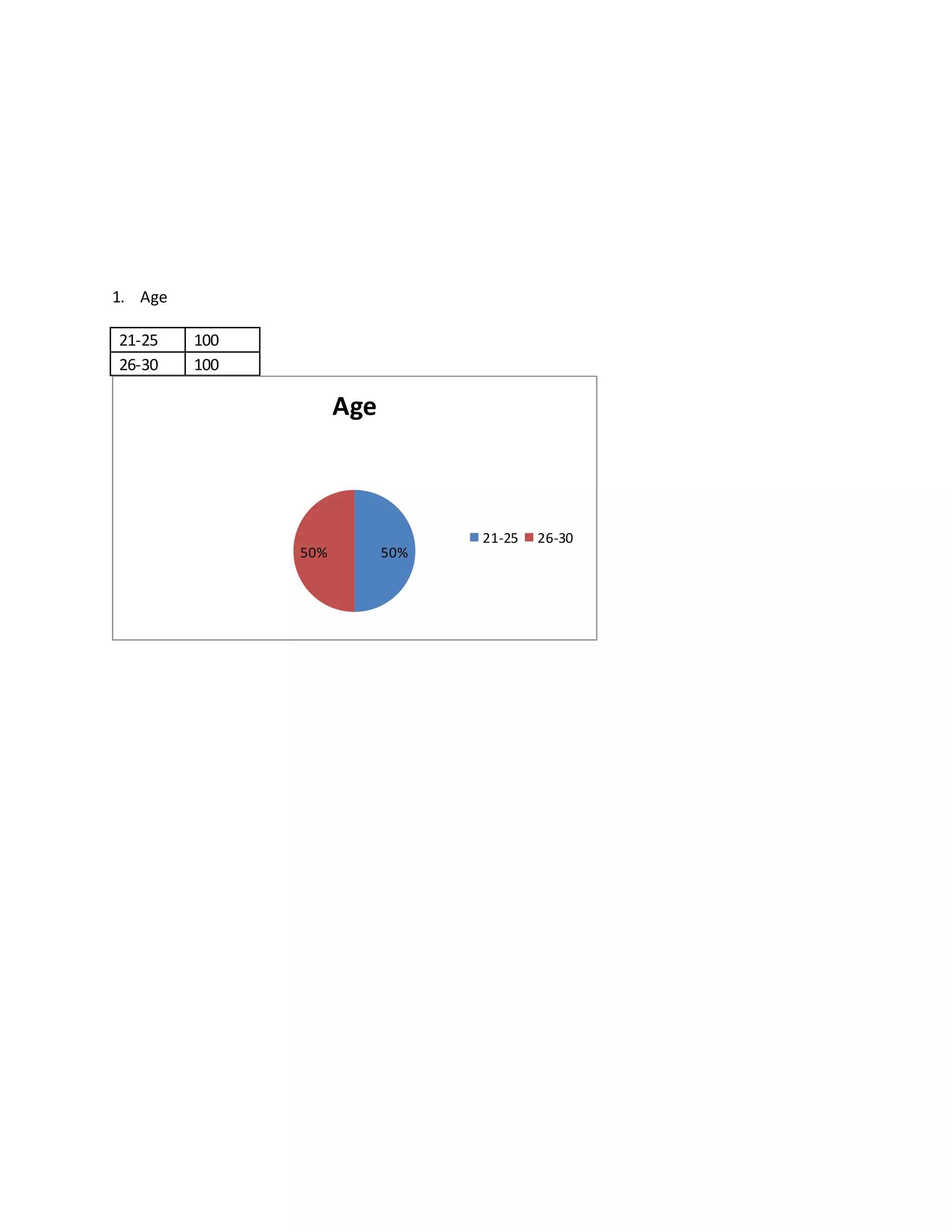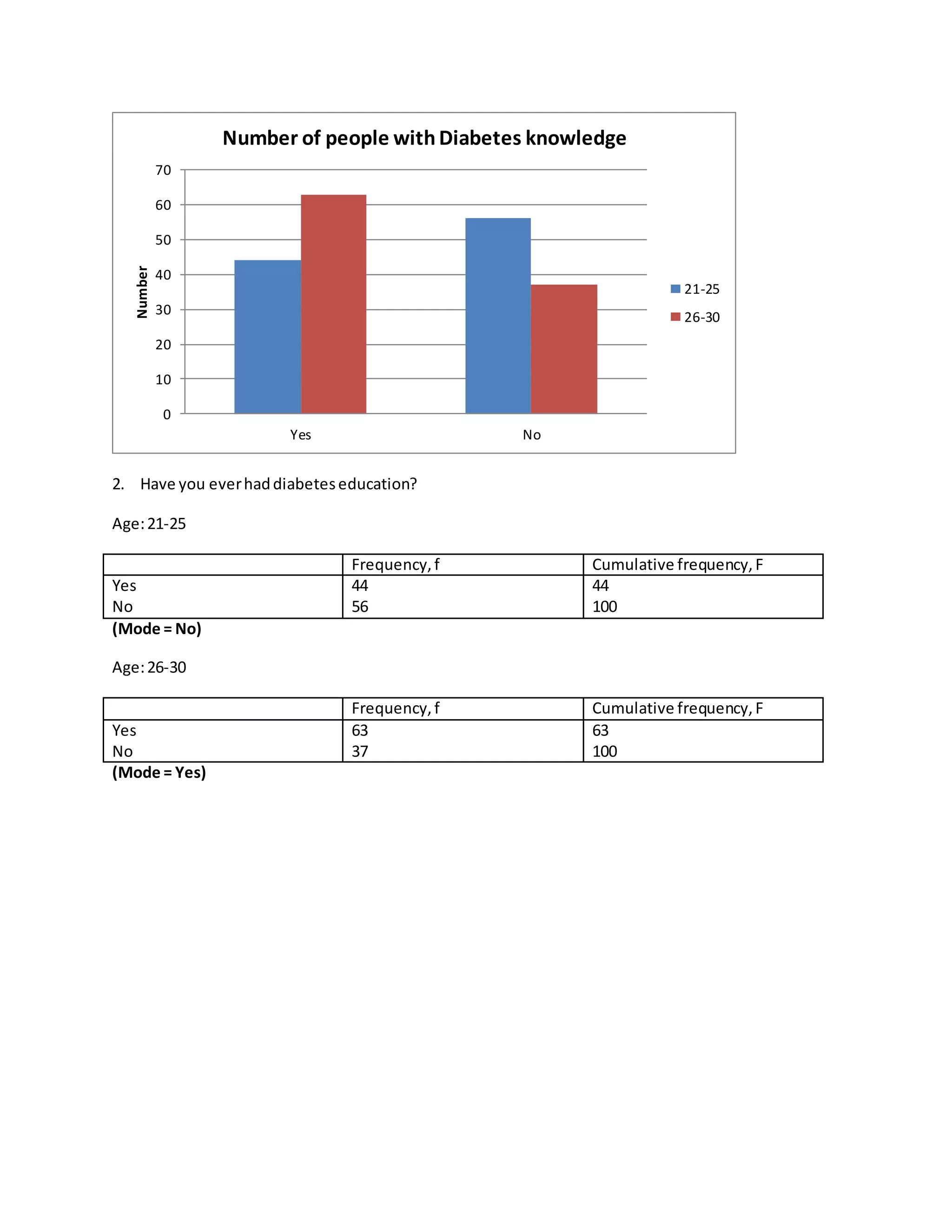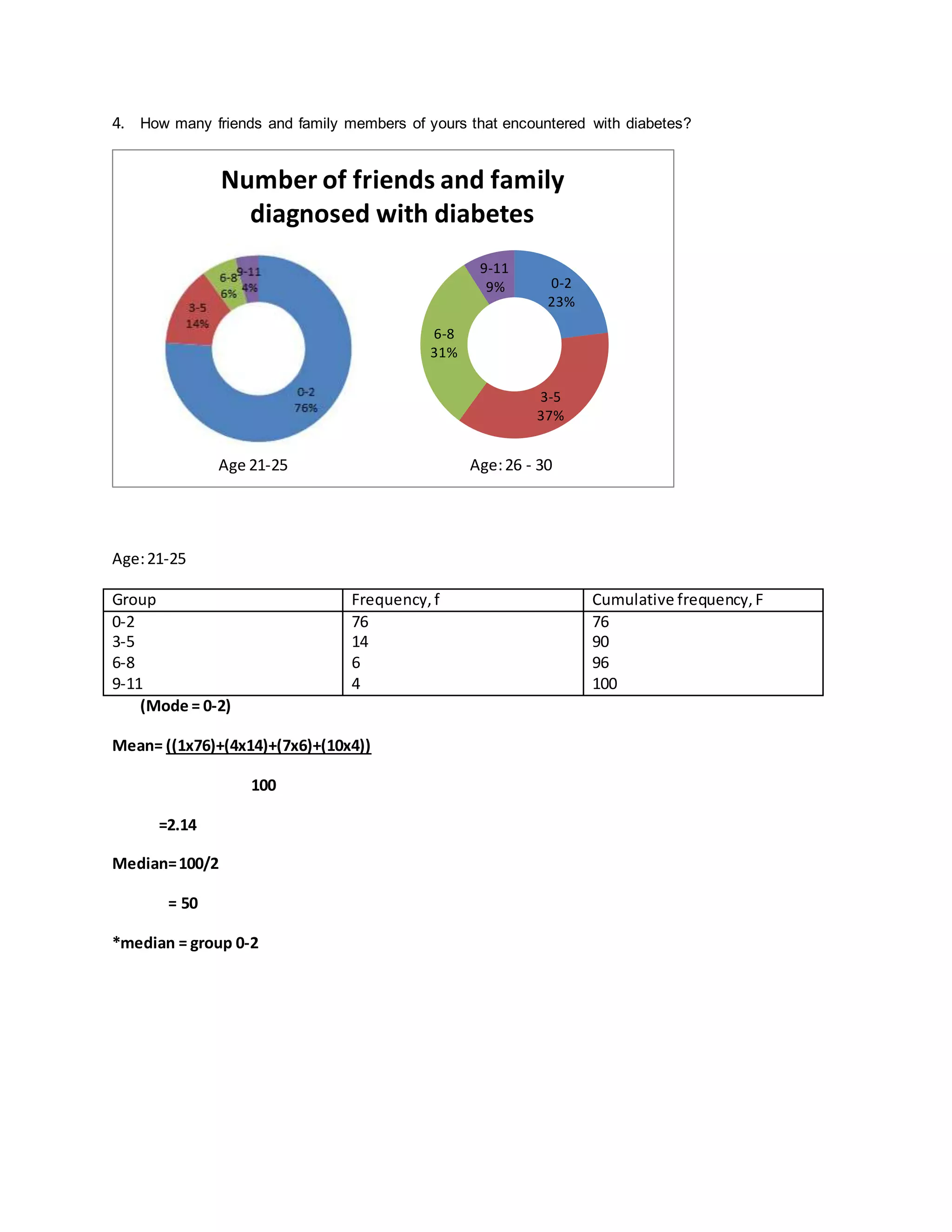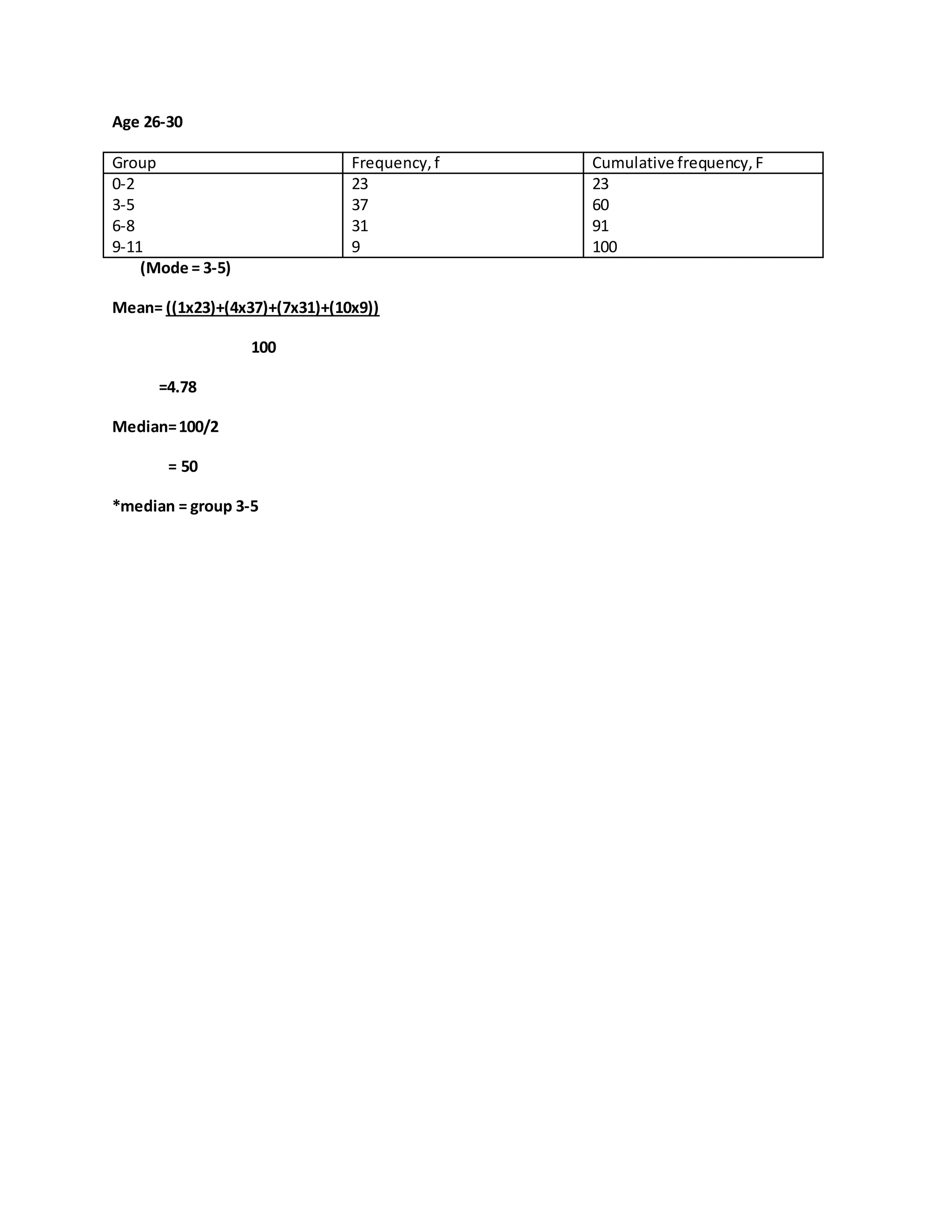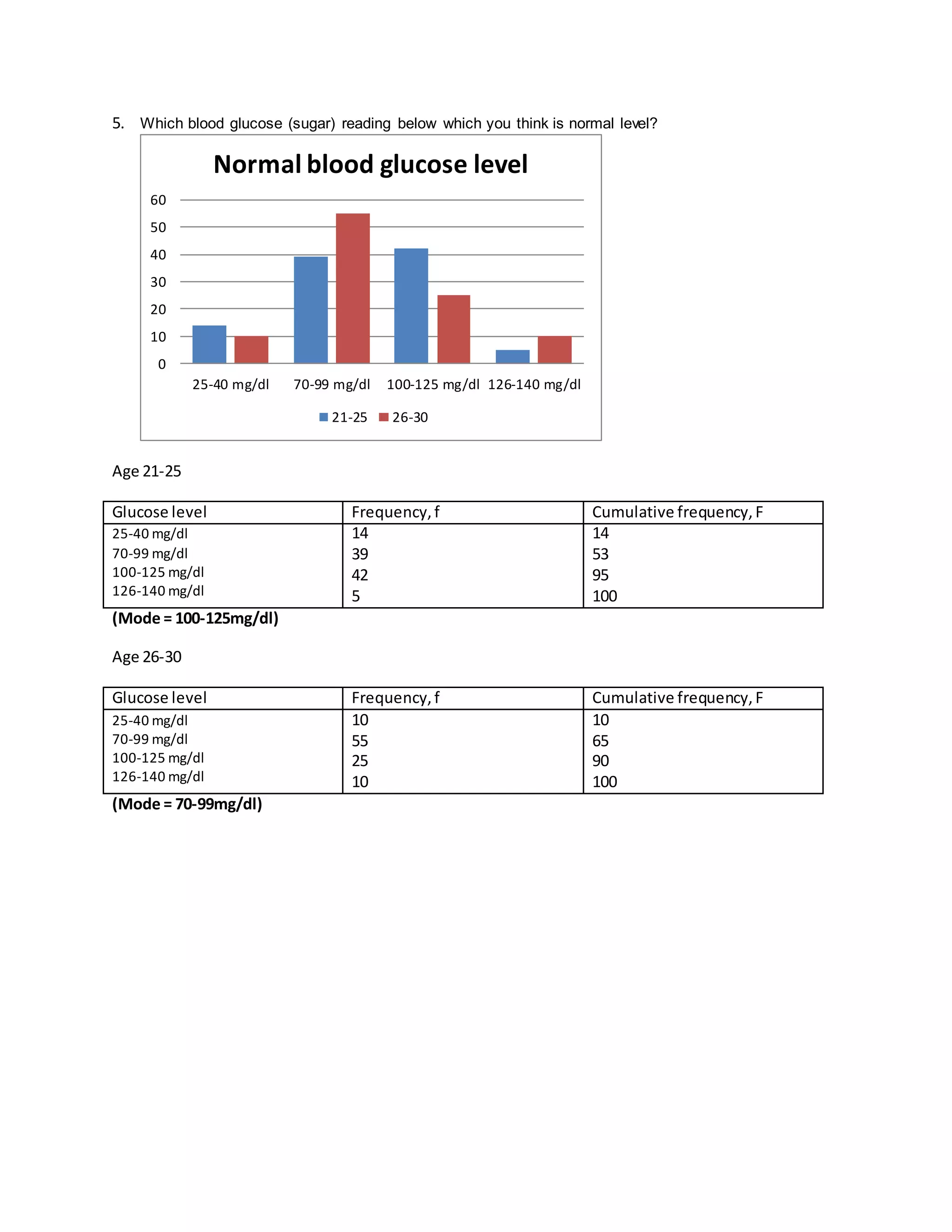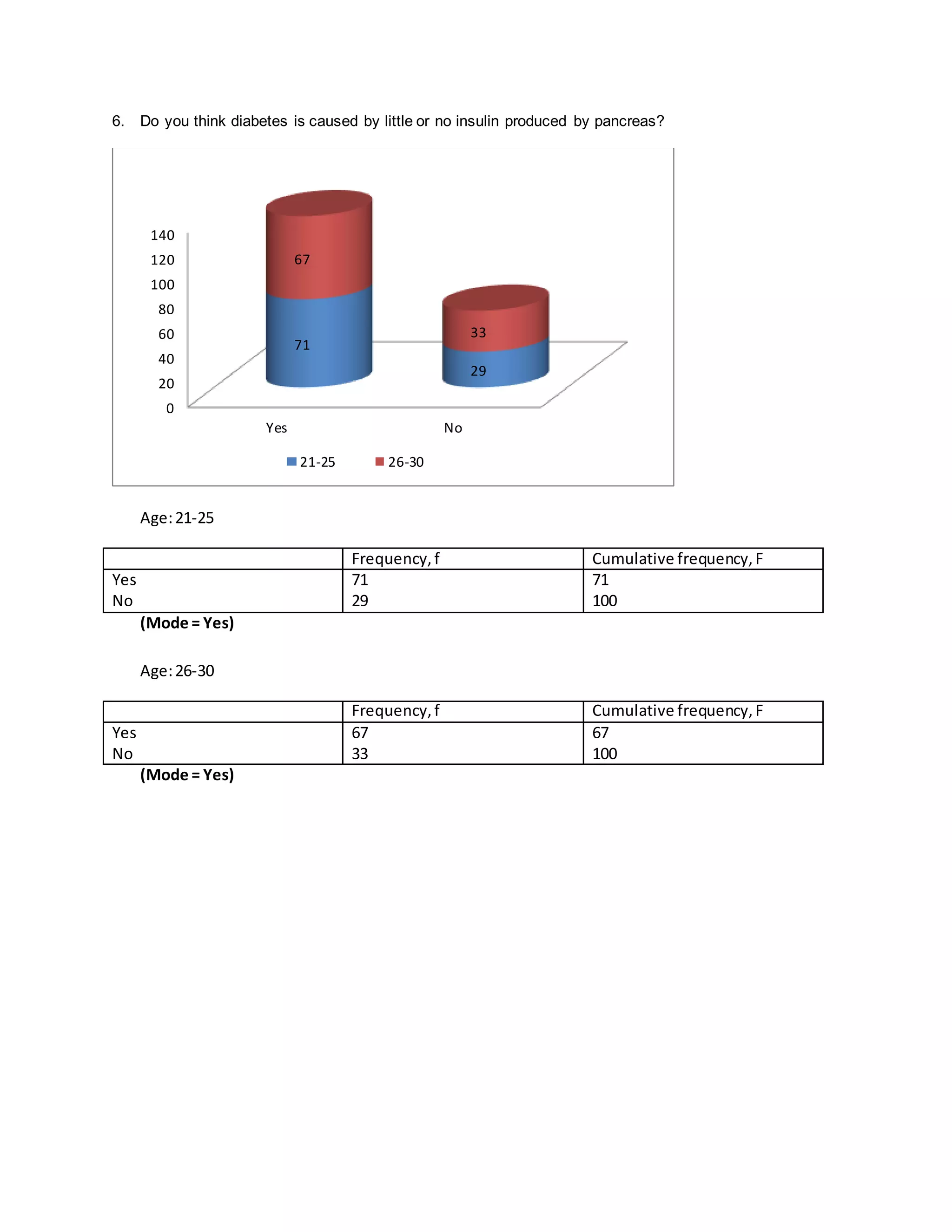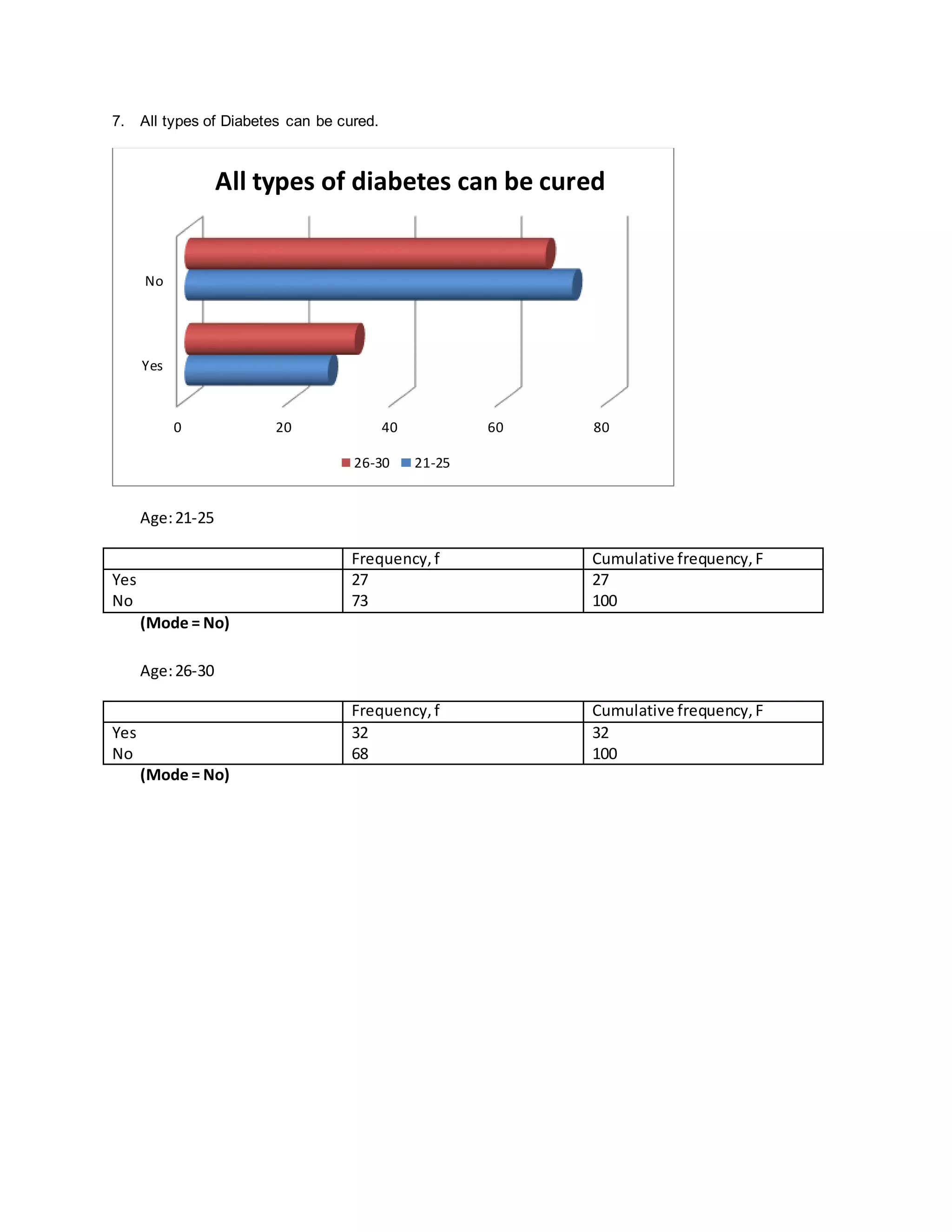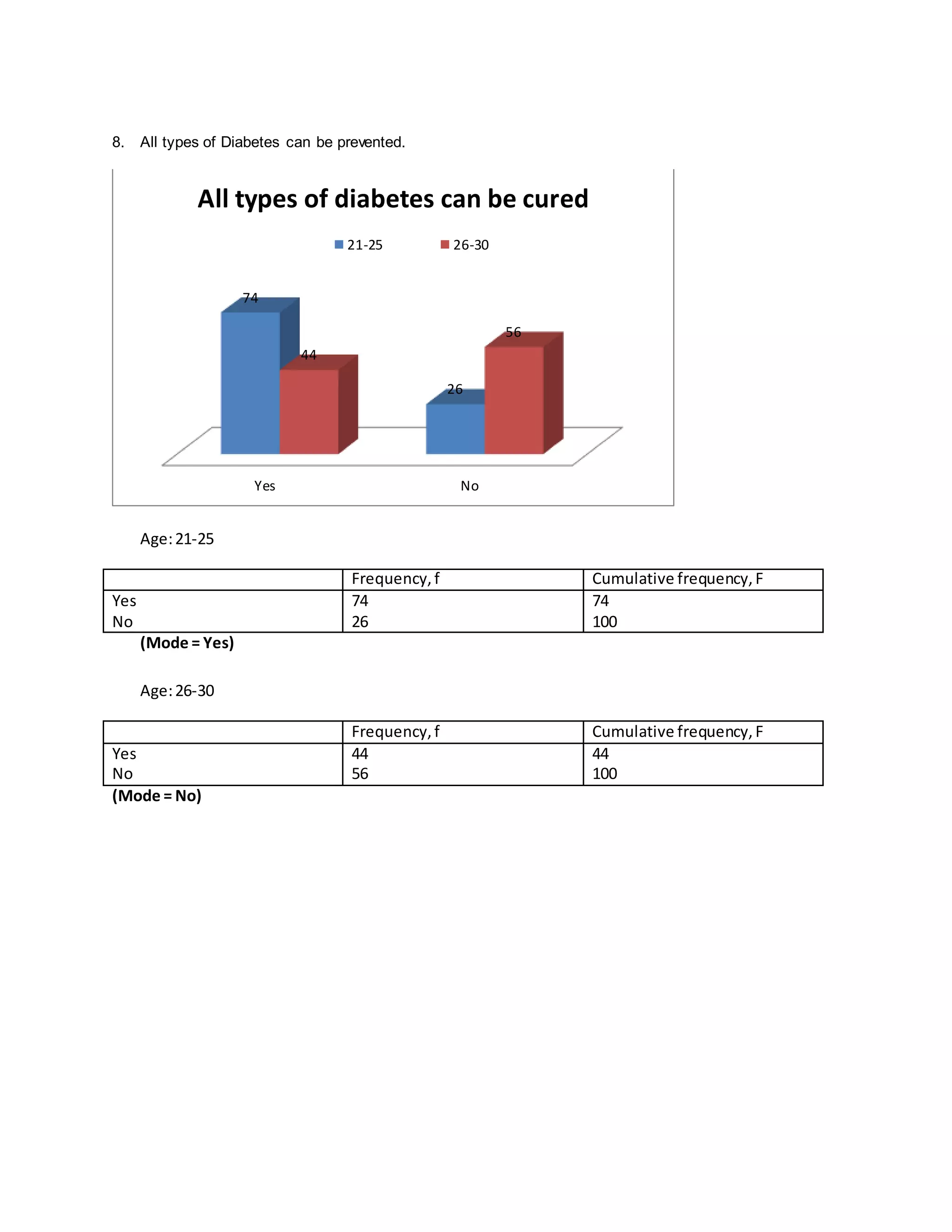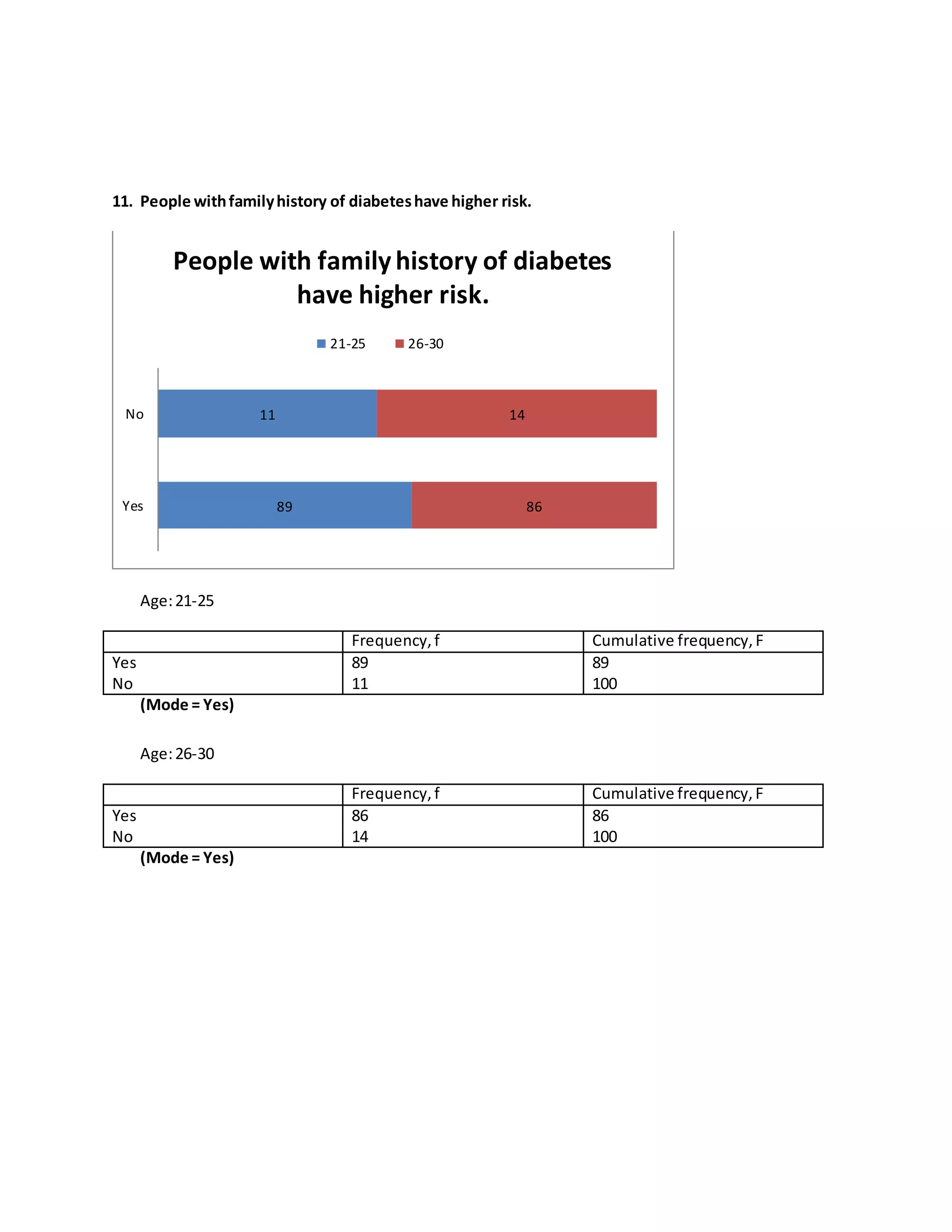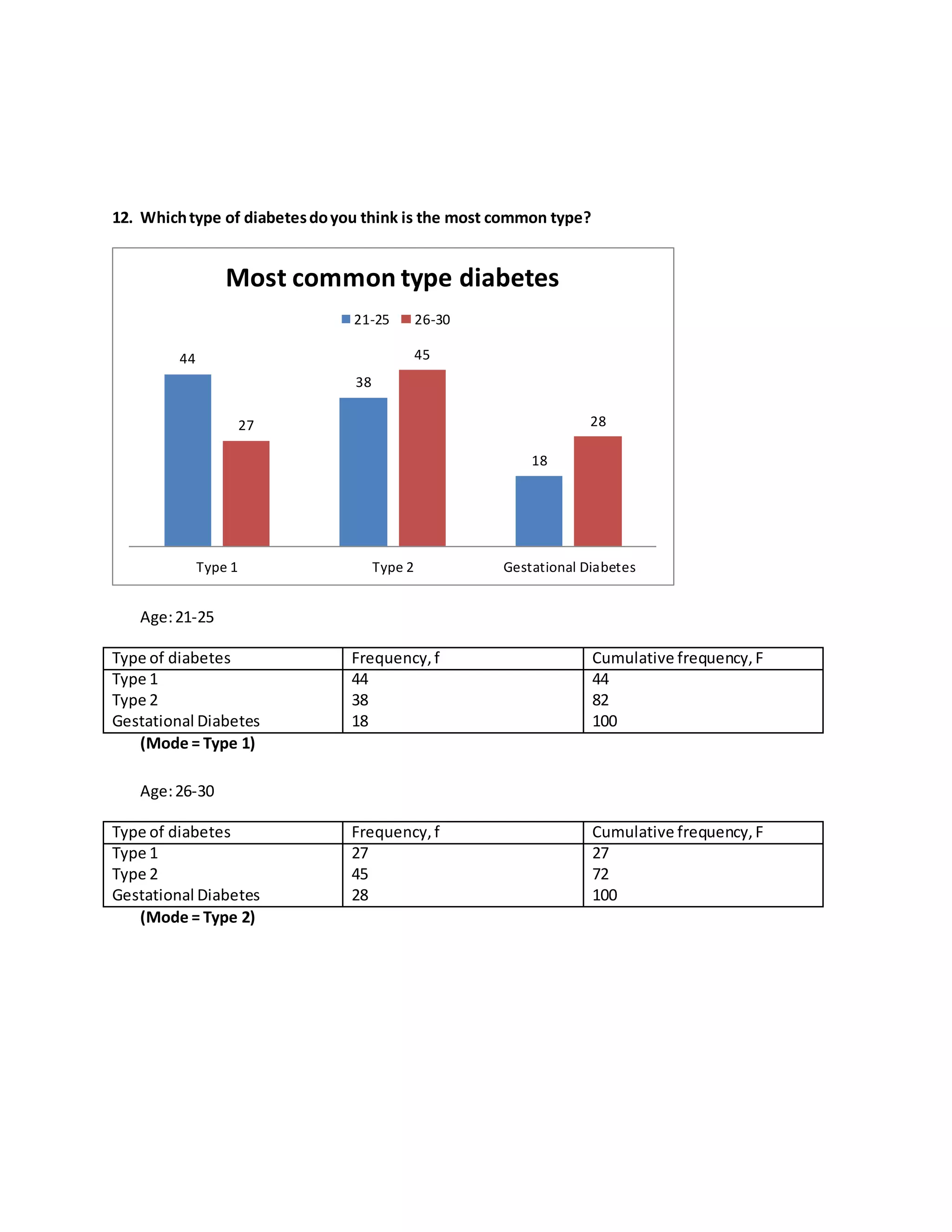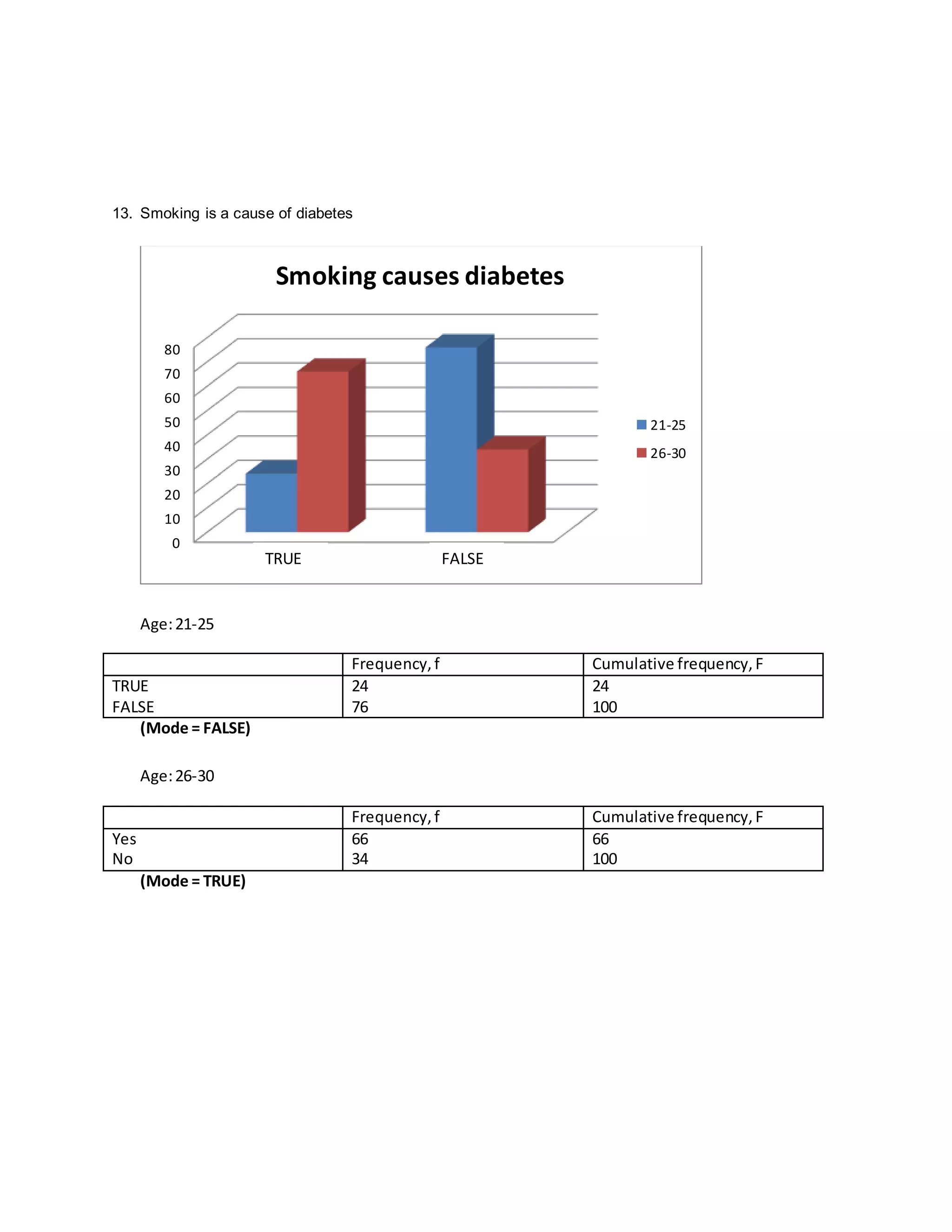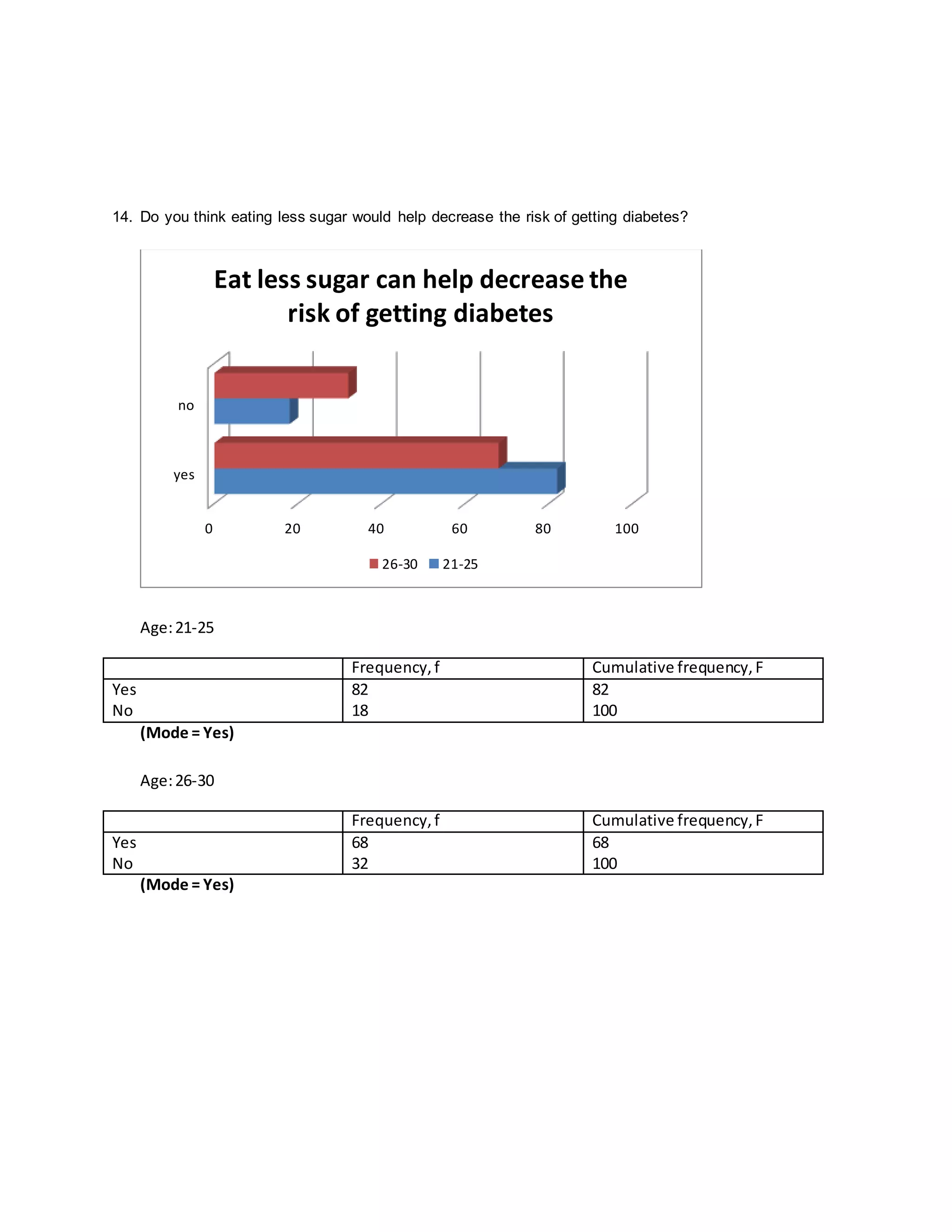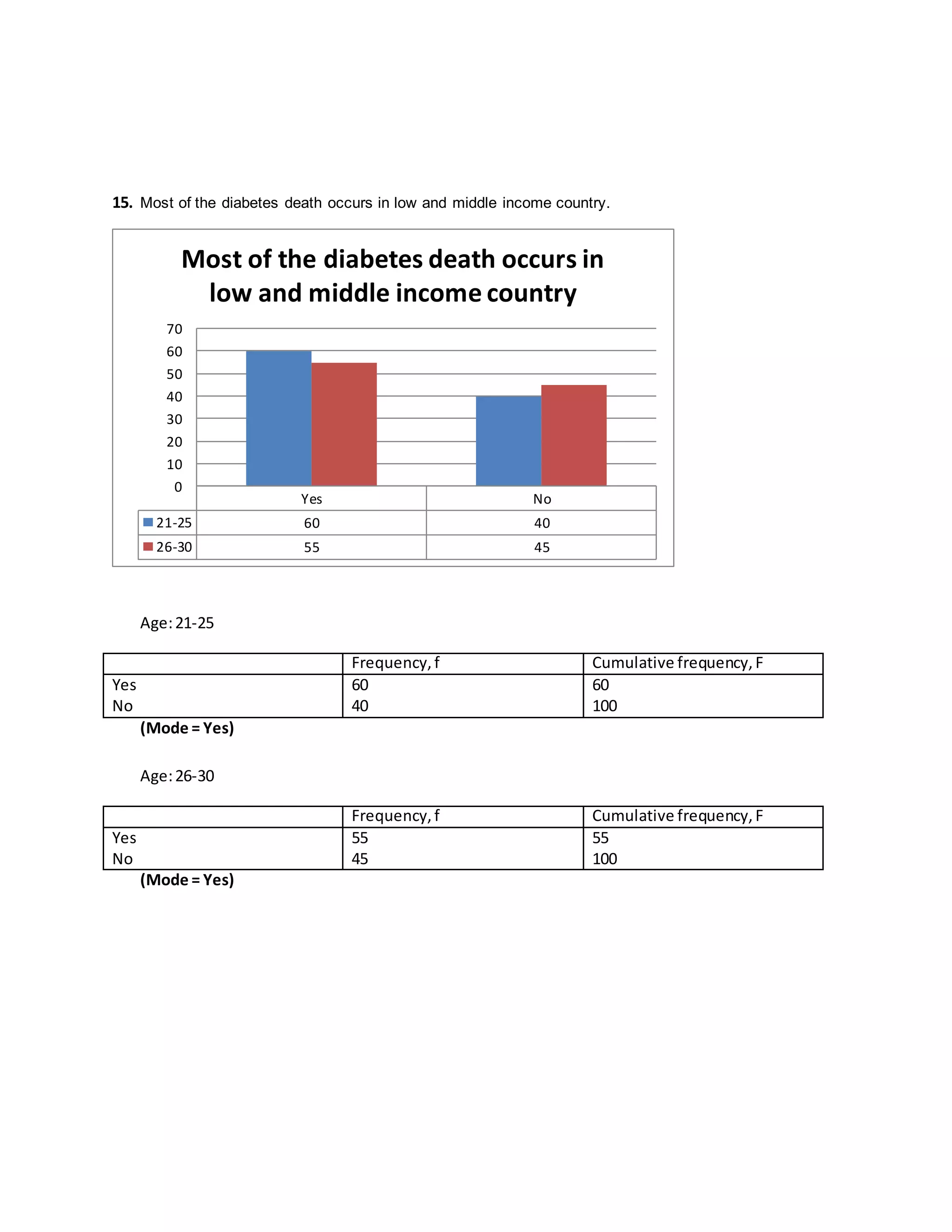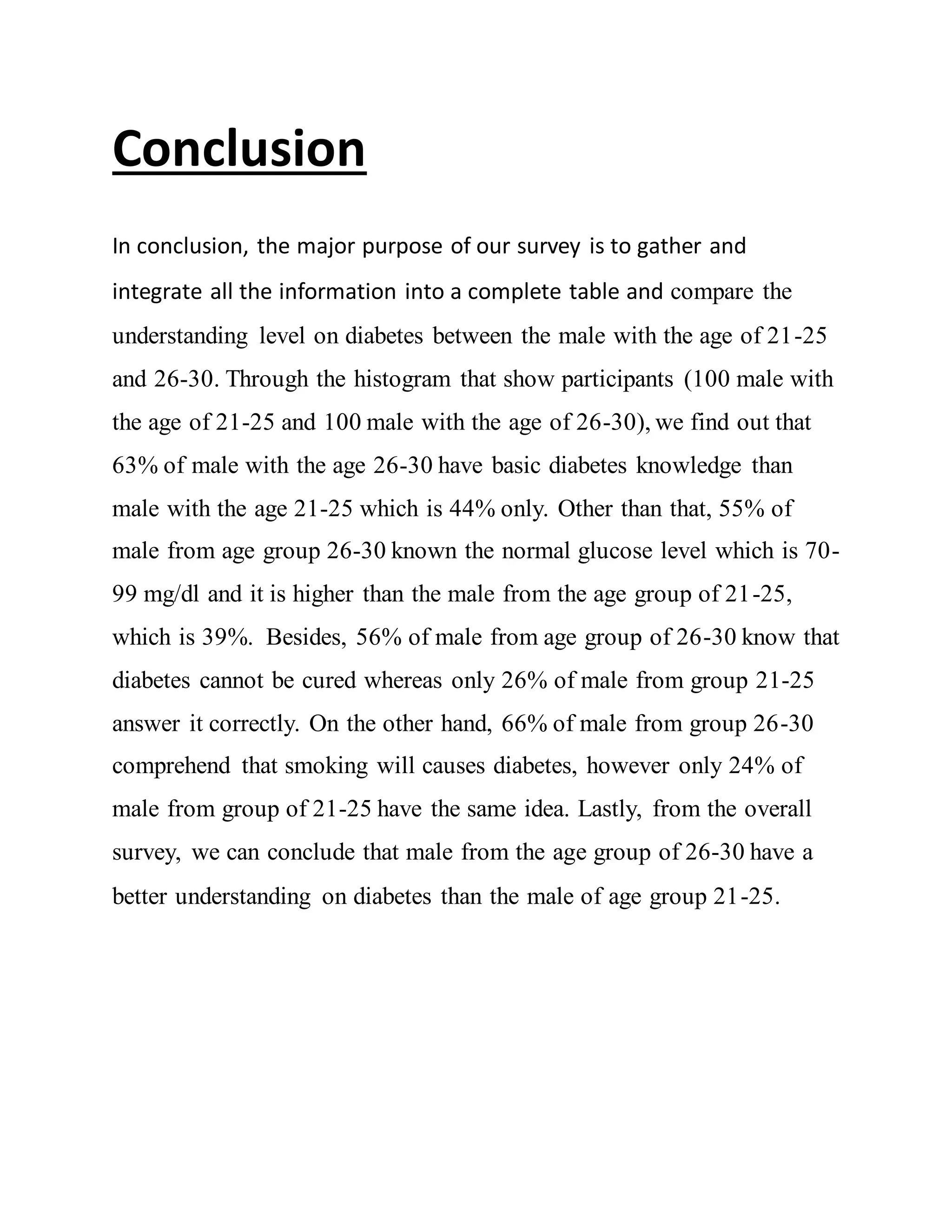This document summarizes the results of a survey about diabetes knowledge between two age groups of men (21-25 and 26-30). The survey included 16 questions and was completed by 100 men in each age group. The results were analyzed and presented in tables and charts. Overall, the survey found that men aged 26-30 generally demonstrated a higher level of understanding about diabetes compared to men aged 21-25, including being more knowledgeable about normal blood glucose levels, the non-curability of diabetes, and smoking as a risk factor.
![SCHOOL OF ARCHITECTURE, BUILDING & DESIGN
Foundation of Natural & Built Environments (FNBE)
MATHEMATICS [MTH10304]
Lecturer: Ms Ann See Peng
Assignment: Statistics
Group Members: Kiing Kiu Chun
Lau Chin Sheng
William Goh Ming Hann
Sham Zhen Wen
1](https://image.slidesharecdn.com/mathsfinalise-141208075454-conversion-gate02/75/Maths-finalise-1-2048.jpg)
